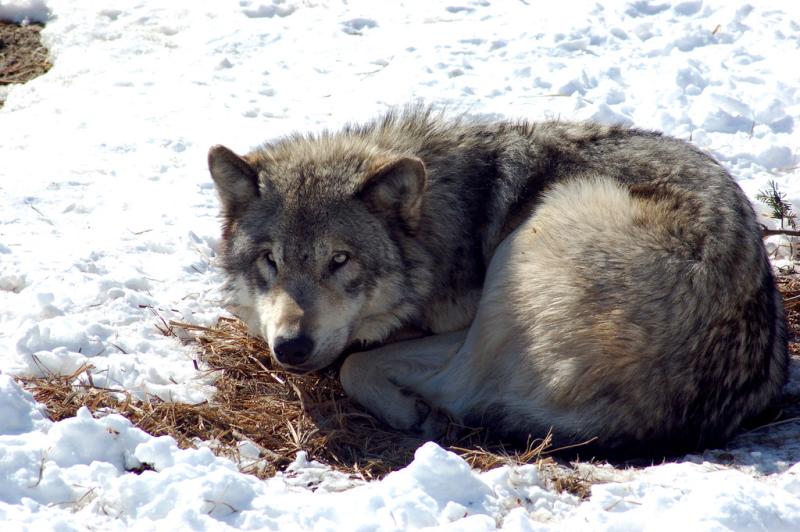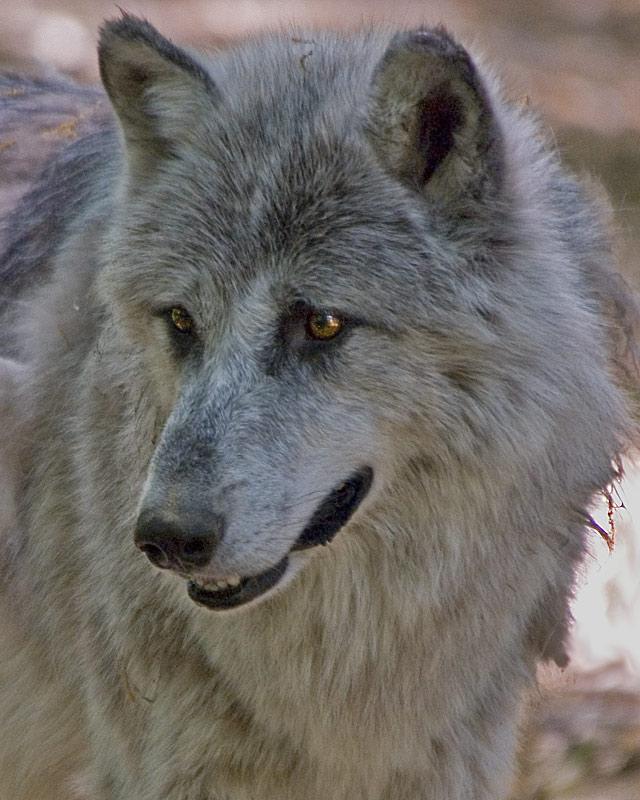Wildlife North America . com North American Animals - mamals, birds, reptiles, insects |
Gray Wolf (Canis lupus)
A captive Gray Wolf at the Wildlife Science Center in Minnesota. Photograph by Derek Bakken. Some rights reserved. (view image details) 
Gray Wolf close up of head. Photograph by Philip Hodgkins. Some rights reserved. (view image details)
GRAY WOLF FACTS
DescriptionGray Wolves range in color from pure white in Arctic populations, to mixed colors of gray, brown, cinnamon, and black. Usual color in North America is white with shades of black, gray, and brown on the upper parts of the animal. The back is darker and muzzle, ears, and legs have reddish brown color. The underside is white and the tail ha a black tip. There is also a darker phase with brown to black upper side and paler underside. Other Names Timber Wolf, Prairie Wolf, Mexican Wolf, Arctic Wolf Size Length: males 1.0m - 1.3m; females; 0.9m - 1.2m Environment arctic tundra, forest, prairie, arid areas Food hunt in packs for large prey such as moose, elk, bison and reindeer Breeding Litter size is normally 6 or 7 but can be as many as 14. Pups are born in a den after gestation period of about 60 days. Pups remain in the den until they are 8 to 10 weeks old. The young o hunt with the pack at about 10 months. Range United States, Alaska, Canada, Mexico Classification
Relatives in same Genus Coyote (C. latrans) Red Wolf (C. rufus) Home | Mammals | Reptiles | Birds | Insects | Privacy Policy | Disclaimer | Contact Us |